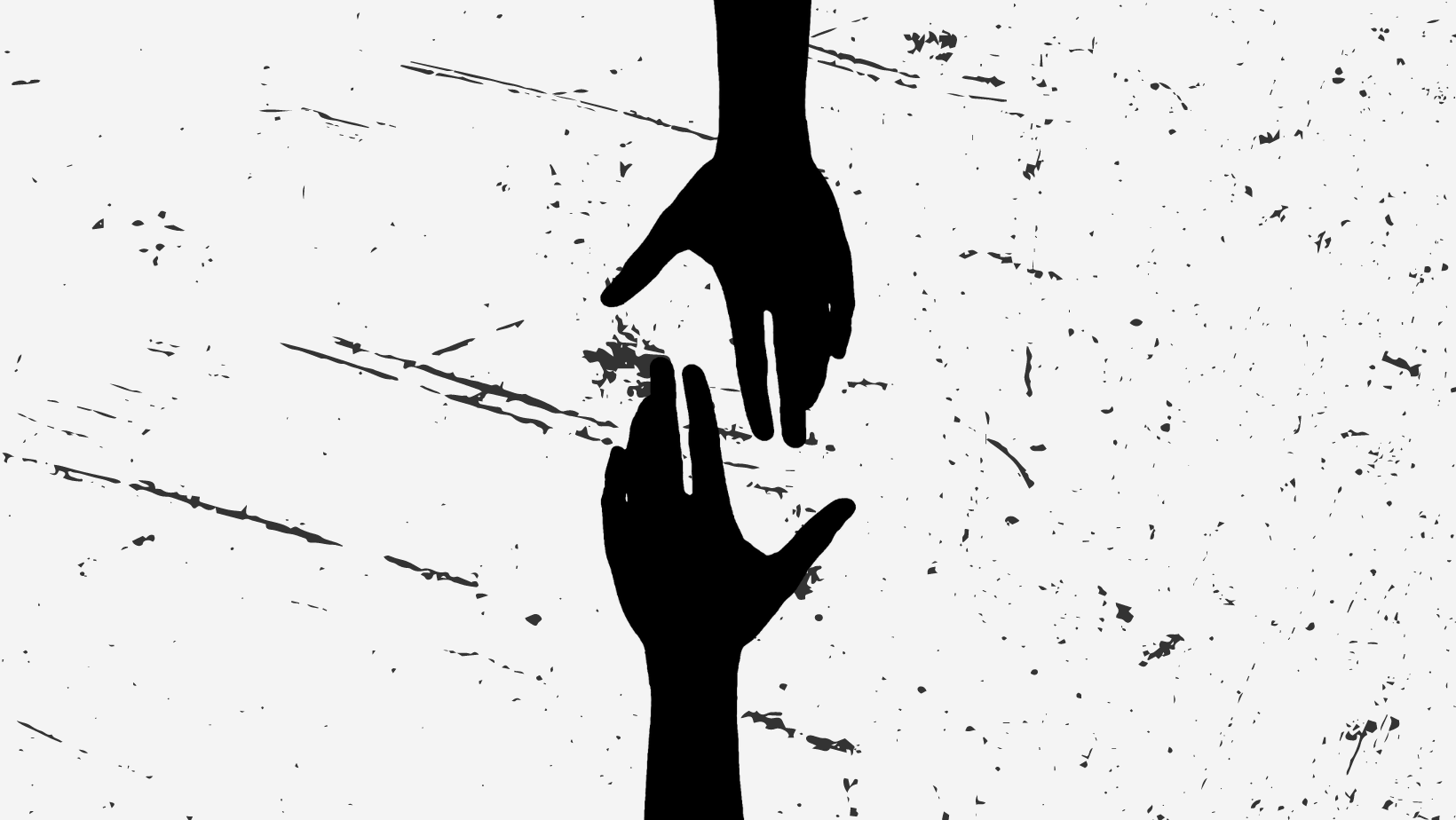Sometimes, when you open up social media, you see recipes, OOTDs, cat videos or celebrity gossip. Other times, you see a political catastrophe completely terrifying, completely destructive— and somehow, happening almost completely under your nose.
It’s tempting to want to sink into bed and do nothing. Maybe you think there’s no way to even help in situations like the ongoing Israel-Hamas war. But here’s what we can do that could have an impact:
DONATE
Of course, not everyone has a dollar to spare. But if you do (and yes, that means even a dollar) consider donating to charities helping those affected.
That doesn’t mean just to send a dollar somewhere and hope it works. Unfortunately, there are people willing to make a quick buck off of people’s suffering— so much so that the Federal Trade Commission has advice on their website on how to spot bad charities.
Sometimes, these charities are technically legitimate, but their priorities aren’t straight.
“Check out the charity’s website,” the FTC said on their website. “Does it give you details about the programs you want to support or how it uses donations? How much of your donation will go directly to support the programs you care about? If you can’t find detailed information about a charity’s mission and programs, be suspicious.”
Another alternative to giving money is donating to mutual aid funds.
Mutual Aid, popularised by philosopher Peter Kropotkin, is when multiple entities decide to collaborate to fulfill their needs with the shared understanding that the systems they live in won’t do it for them.
“Mutual aid is not charity,” The University of Georgia said on their website, “but the building and continuing of new social relations where people give what they can and get what they need, outside of unjust systems of power.”
Finding mutual aid groups is a little harder than seeking out charities.
Most charities have readily available information on Google because they have the resources. However, many mutual aid groups are grassroots organizations created with what the people have at hand.
For example, the Montclair Mutual Aid Group lists several New Jersey mutual aid groups. Many of them operate through Instagram (like @greenvillecommunityfridge) or other social media sites (like the Mutual Tenant Collective of Hudson County, or MATCH— operating on Facebook as well as Instagram).
If you want to find a mutual aid group, oftentimes the best way to donate is through looking it up on social media. But understandably, you might be skeptical about sending money to someone on Instagram. Sometimes, mutual aid groups will post pictures showing where the money is going, whether you’ve paid for food or other resources. Some mutual aid groups will even make it clear when they’re looking for other donations.
Other than directly donating to affected people crowdfunding on sites like GoFundMe, charities and mutual aid groups are viable ways to show support.
CALL YOUR REPRESENTATIVES
Most people have a phone, and almost everyone has a representative, senator, or other government authority they can call.
Okay, technically if you’re calling their number you’re getting their intern or staff assistant, according to an article from the New Yorker. But that doesn’t mean your call was for nothing.
Calling your congresspeople demands them to put someone on the other end. And that takes time. Time that the person could use to do anything else, and if they’re spending that time otherwise instead listening to people talk about the same issue over and over again, their work gets impacted.
“For mass protests, such as those that have been happening recently, phone calls are a better way of contacting lawmakers,” the New Yorker said, “not because they get taken more seriously but because they take up more time—thereby occupying staff, obstructing business as usual, and attracting media attention.”
Understandably, calling congresspeople might seem like a Herculean task. Many people fear phone calls, nonetheless much more phone calls to such an important person. But in situations like these, organizations already involved will create a call script for people to follow, like what Jewish Voice for Peace did on their website. Some organizations will even find who your congresspeople are so your call goes to the right people.
Call scripts, like those from the JVP, are brief. At around sixty words, they’re barely longer than a tweet— and reading it out takes less time than writing one. Calling your congresspeople may seem hard, but activist groups incentivize it by making the process easier.
STAY EDUCATED
It might be discouraging to learn about something new and awful going on— only to find out that it’s not really “new,” it’s the culmination of injustice that’s been happening for decades. Any combination of upsetting emotions can run through you— fear for the people affected, helplessness at the situation, frustration that. You’re only learning about it now— but whatever the situation is, help starts with getting educated.
However, it’s important to be critical of where you get your information, even if it’s from a news sources you know. CNN broadcasted on their channel that babies and toddlers were found beheaded after Hamas’ attacks, posting the footage of the report to X on October 11. Just a day later, the reporter who covered the story, Sara Sidner, took back what she said on her personal X feed.
Yesterday the Israeli Prime Minister's office said that it had confirmed Hamas beheaded babies & children while we were live on the air. The Israeli government now says today it CANNOT confirm babies were beheaded. I needed to be more careful with my words and I am sorry. https://t.co/Yrc68znS1S
— Sara Sidner (@sarasidnerCNN) October 12, 2023
“Yesterday the Israeli Prime Minister’s office said that it had confirmed Hamas beheaded babies & children while we were live on the air,” she said. “The Israeli government now says today it CANNOT confirm babies were beheaded. I needed to be more careful with my words and I am sorry.”
Misinformation can be rife through a crisis, but in the age of social media people affected can share their stories directly online.
Maha Hussaini, a journalist from the Middle East Eye shared her experiences on TikTok.
The official Middle East Eye showed what Hussaini said “might be her last video, as [her] phone battery is dying while we’re facing an almost complete blackout after Gaza’s sole power plant has shut down.”
@middleeasteye Middle East Eye journalist in Gaza has a message to the world “Hello world, this might be my last video as my phone battery is dying.” Maha Hussaini, Middle East Eye correspondent in Gaza, has a message to the world. #Gaza #israeliairstrikes #GazaIsrael #fy #Reporting #journalist #journalism #fy #fyp
She’s not alone. Through any crisis, people post what they’re seeing on social media sites like TikTok or X. Oftentimes, this is as close as the source as you’ll get it— their videos show exactly what they’re seeing.
Getting a mix of primary sources, like what individuals are recording, and secondary sources, like news organizations, is a right step to helping— and you can even do it from your couch.
MARCH
Most people tend to hear about marches after they’re over, like The New York Times covering the ones for Palestine in the city and ABC 7 covering the Livingston ones for Israel. If you want to be in them instead of hearing about them, it’s about acting fast.
According to The Answer Coalition, about half of the demonstrations for Palestine they logged on their national listing happened three days after Hamas launched their attack. While demonstrations remain ongoing across the country, it’s important to stay vigilant about when the march is happening in your hometown.
You can find where marches, protests and other demonstrations are happening both online and on social media. Just look up the cause, then add “march near me” or any other variation of the keywords. Organizations like The Answer Coalition keep running tabs on who’s running what and when.
However, many of the results might be for demonstrations in the nearest big city. And as implied before— just because something is happening in New York doesn’t mean nothing is happening in Livingston. Oftentimes, groups looking to show support for a cause turn to social media for people to come to their events, like how the vigil in Livingston circulated flyers around Instagram days before TapInto caught the story on their website. It’s not as simple as a Google search, but it’s a good way to connect with your neighbors about a cause you care about.
We understand that sometimes it’s may feel like there’s nothing any of us as individuals can do. But Slice of Culture believes— there are things we can do and things that can have an impact. Perhaps it’s small, but when many do it, it becomes something more.


